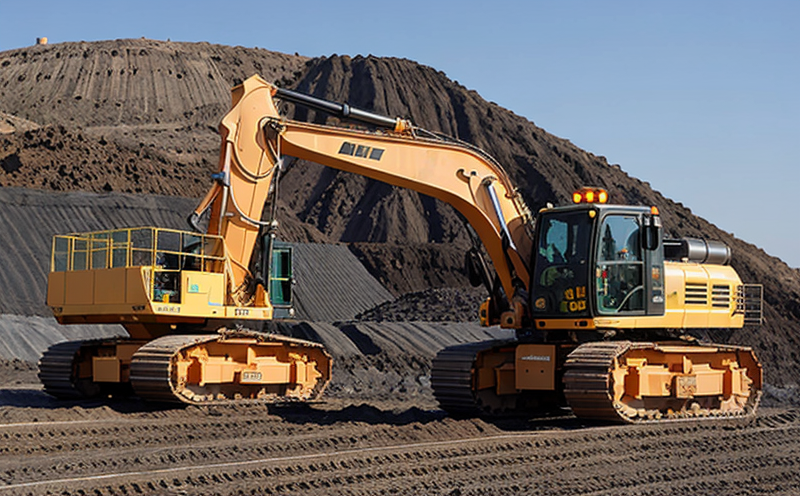MSHA Explosion Proof Equipment Certification Testing
The Mine Safety and Health Administration (MSHA) explosion proof equipment certification is a critical requirement for mining operations to ensure the safety of workers in hazardous environments. This stringent testing protocol is designed to verify that electrical devices, such as lighting fixtures, motors, and control panels, are safe from ignition sources in mines. The primary goal is to prevent explosions caused by sparks or overheating within potentially explosive atmospheres.
Mining environments often contain flammable gases, dusts, and other combustible materials, making them inherently dangerous. MSHA regulations mandate that all electrical equipment used underground must be certified as explosion proof according to the MSHA standards. These standards are based on international norms such as IEC 60079 and EN 50281, which provide a framework for assessing the ignition protection of electrical equipment.
The testing process involves subjecting the equipment to a series of rigorous tests that simulate real-world conditions. This includes exposure to high temperatures, sparks, and explosive atmospheres. The apparatus used in these tests must replicate the mining environment as closely as possible. For instance, the test chamber is designed to mimic the pressure, temperature, and gas composition found underground.
During the certification process, manufacturers submit samples of their equipment for testing. These samples undergo a series of tests to ensure they meet MSHA’s stringent requirements:
- Flame Test: The sample is subjected to an electric arc to simulate sparks that may occur during operation.
- Pressure Test: The equipment is exposed to high pressure to check its integrity under conditions similar to those found in a mine.
- Thermal Stability Test: This test verifies the equipment’s ability to withstand extreme temperatures without causing ignition.
The testing process can take several weeks, depending on the complexity of the equipment and the thoroughness required. Once the tests are completed, an independent laboratory issues a report detailing the results. If the equipment passes all tests, it is certified as explosion proof and granted MSHA approval.
For quality managers, compliance officers, R&D engineers, and procurement teams, this certification testing ensures that the mining operations comply with safety regulations. Properly tested and certified equipment not only protects workers but also helps companies avoid costly fines and potential legal issues associated with non-compliance. By adhering to MSHA standards, organizations can demonstrate their commitment to worker safety and regulatory compliance.
In summary, MSHA explosion proof equipment certification testing is an essential process for mining operations. It ensures that the electrical devices used underground are safe from ignition sources, thereby preventing explosions and protecting workers’ lives. This testing aligns with international standards and local regulations, providing peace of mind to those involved in mining operations.
Why It Matters
The importance of MSHA explosion proof equipment certification cannot be overstated, especially in the context of mining operations where safety is paramount. The certification process ensures that electrical devices used underground are safe from ignition sources, thereby preventing explosions and protecting workers’ lives.
In mines, the presence of combustible gases such as methane or coal dust increases the risk of explosions when exposed to sparks or excessive heat. These explosions can lead to severe injuries or fatalities. By adhering to MSHA standards, mining companies demonstrate their commitment to worker safety and regulatory compliance.
The certification process involves rigorous testing that simulates real-world conditions in mines. This includes exposure to high temperatures, sparks, and explosive atmospheres. The apparatus used in these tests is designed to replicate the mining environment as closely as possible. For instance, the test chamber can be pressurized to mimic the conditions found underground.
Failure to comply with MSHA regulations can result in significant penalties, including fines and shutdowns of operations. Properly tested and certified equipment not only protects workers but also helps companies avoid these costly consequences. By adhering to MSHA standards, organizations can demonstrate their commitment to worker safety and regulatory compliance.
Benefits
The benefits of obtaining MSHA explosion proof equipment certification are numerous and far-reaching. First and foremost, it ensures the safety of workers in mining environments by preventing explosions caused by sparks or overheating within potentially explosive atmospheres. This is crucial given the inherent dangers posed by flammable gases and dusts present in mines.
Secondly, MSHA compliance helps organizations avoid costly fines and potential legal issues associated with non-compliance. By adhering to strict testing protocols, companies can demonstrate their commitment to worker safety and regulatory standards. This, in turn, enhances the company’s reputation and builds trust among stakeholders.
Additionally, certified equipment is more reliable and durable. The rigorous testing process ensures that the devices meet high-quality standards, which translates into longer operational lifetimes and reduced maintenance costs. For quality managers, this means less downtime and fewer repairs, leading to increased productivity and efficiency.
In summary, MSHA explosion proof equipment certification offers several key benefits: enhanced worker safety, compliance with regulatory requirements, avoidance of costly penalties, improved reliability and durability, and increased operational efficiency. These advantages make it an essential requirement for mining operations seeking to ensure the highest standards of safety and compliance.
Why Choose This Test
- Compliance with MSHA Regulations: Ensures that electrical devices used in mines meet strict safety standards.
- Potential for Cost Savings: Avoids fines and operational disruptions due to non-compliance.
- Enhanced Worker Safety: Protects workers from the risk of explosions caused by sparks or excessive heat.
- International Standards Alignment: Aligns with global best practices in explosion-proof equipment design and testing.
- Durability and Reliability: Certified equipment is more reliable and durable, leading to longer operational lifetimes and reduced maintenance costs.
- Reputation Enhancement: Demonstrates a commitment to worker safety and regulatory compliance, enhancing the company’s reputation among stakeholders.
Selecting this test ensures that mining operations comply with MSHA regulations and international standards. This not only enhances worker safety but also protects companies from costly fines and operational disruptions due to non-compliance. By adhering to these stringent testing protocols, organizations can demonstrate their commitment to worker safety and regulatory compliance.





